

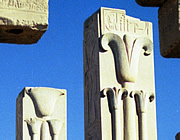
Dedicated to the Theban triad of Amun, Mut and Khon, the massive complex of the magnificent temple of Karnak is best seen early in the morning before the bulk of the tourists arrive, or late in the day when they have left.
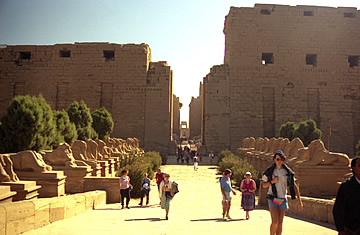
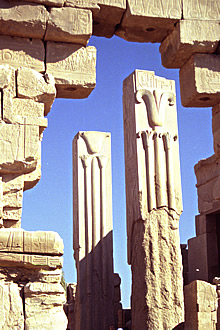
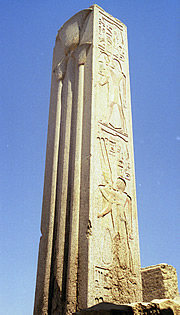
The Temple of Karnak is a fabulous, fascinating place which takes some time to explore. We found it was walkable from the Old Winter Palace in Luxor but I wouldn't recommend it in the heat of the day or from the other side of town!
There is an awful lot to see here and a good guide or guide book is essential if you want to learn more than superficial history. But there is much to be said for simply wandering the ruins, as early or late in the day as possible, and simply taking in the atmosphere and colossal achievements of the builders.
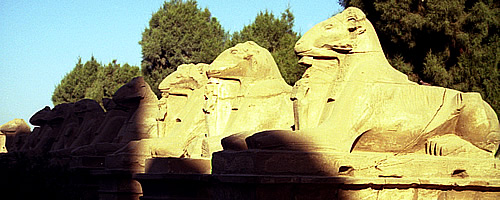
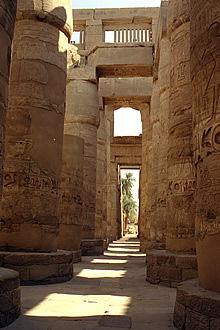
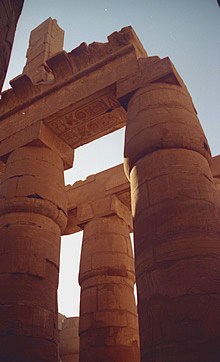
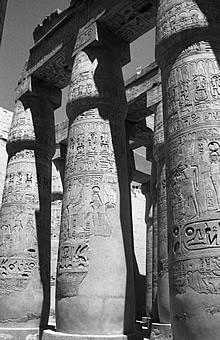
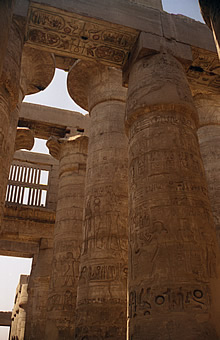
Dedicated to the Theban triad of Amun, Mut and Khons the complex covers 200 acres and its many temples were constructed over a long period of time, stretching from the Middle Kingdom (2000BC) to the time of Ptolemy Auletes (80-51BC). The largest and most important is the Temple of Amun-Ra - the largest in the world.
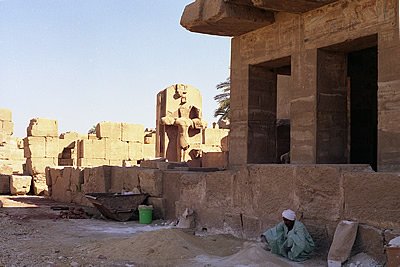
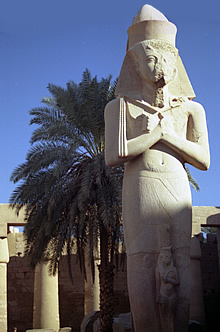
The temple is oriented roughly NW-SE with the main entrance on the NW side. Here the approach to the temple - from what was once a quay on the Nile - is lined with ram-headed sphinxes leading to the first pylon.
Although the sphinxes date from Ramses II, the pylon was constructed in the XXV (Ethiopian) Dynasty. It is 113m wide, 43m high and 13m thick - a massive structure and nearly twice the size of the entrance pylon at the Temple of Luxor.1 Through the first pylon is the Great Court - the avenue of ram-headed sphinxes once continued through here.
SW from the Great Court is the small temple of Ramses III. The SE side of the court is formed by the second pylon on the SW end of which is a famous biblical scene of the defeat of Rehoboam, son of Solomon, by the Egyptian pharaoh Sheshank I.
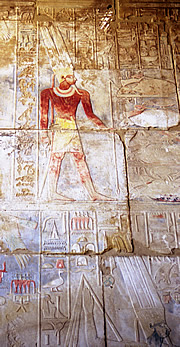
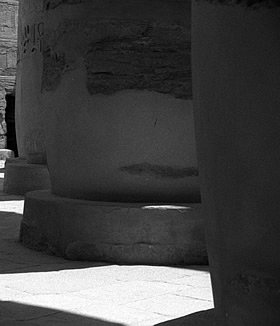
Through the second pylon is the magnificent Hypostyle Hall - the largest chamber of any temple in the world: 54000 square feet containing 134 immense columns.
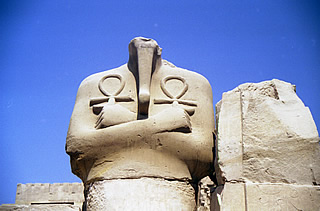
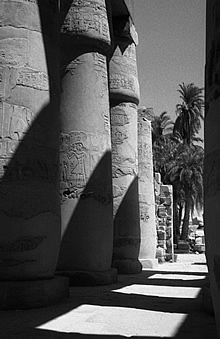
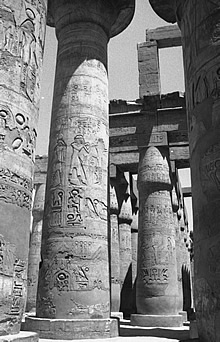
The Great Hypostyle Hall is truly spectacular, it is almost impossible to take in the scale of the building, one of the finest sites in Egypt.
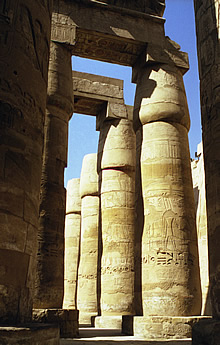
The hall has a high central aisle along the NW-SE axis with 6 huge campaniform open papyrus columns lining each side, each around 23m high and 3.5m in diameter.
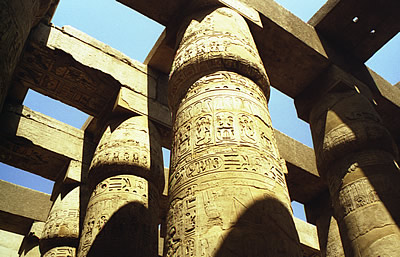
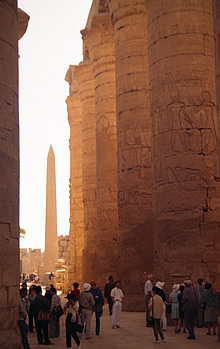
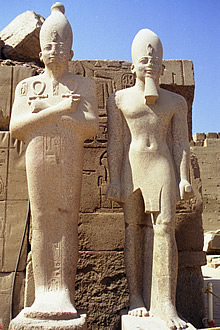
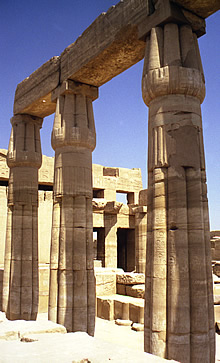
Beyond these the hall is a forest of closed lotus bud columns on both sides, strictly regimented in rows and lower in height than the central aisle.
Exiting the Great Hypostyle Hall through the Third Pylon the small Court of the Cachette is on the SW side - in the early 20th century several thousand bronze statues and 800 stone statues were excavated here.1
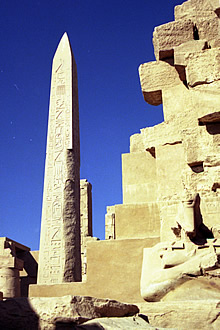
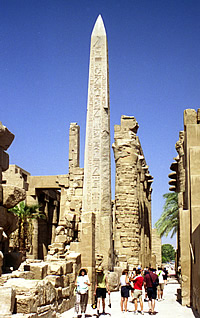
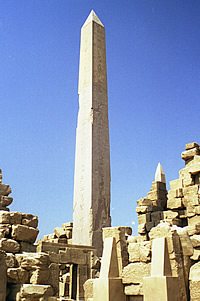
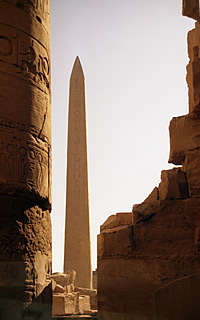
Between the third pylon of Amenhotep III and the fourth pylon of Tuthmosis I there were once two pairs of obelisks erected by Tuthmosis I and Tuthmosis II - only one of the pair of Tuthmosis I remains standing.
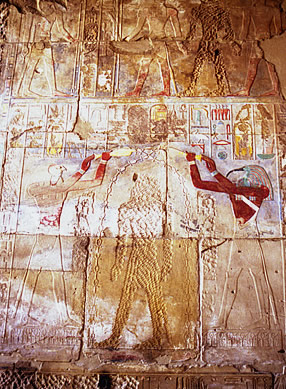
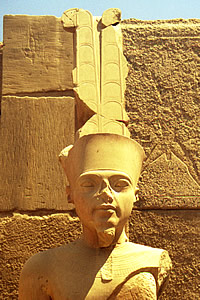
Beyond the fourth pylon are the obelisks of Queen Hatshepsut. Only one remains standing, the other fallen and in pieces, but both would originally have been capped with electrum - an alloy of gold and silver - so that they would have been visible from afar, reflecting the sun.
The upright obelisk is 30m high and is the largest in Egypt. On its base an inscription tells of the origin of the obelisks in the quarries of Aswan and how they were prepared and transported to Luxor in the sixteenth year of the queen's reign.
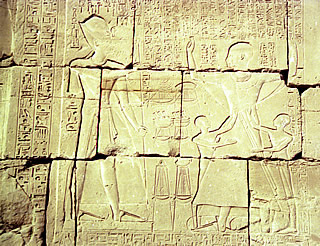
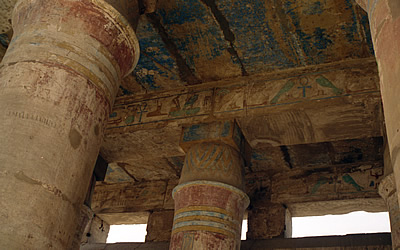
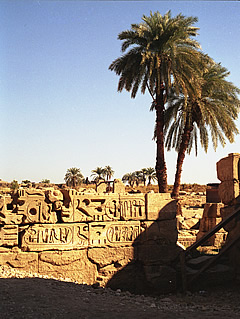
Further east through the fifth and sixth pylons and the jumbled remains of the Middle Kingdom Temple lies the Festival Temple of Tuthmosis III.
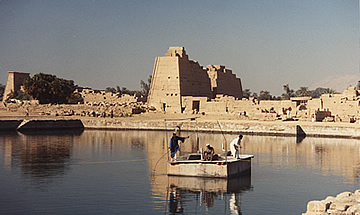
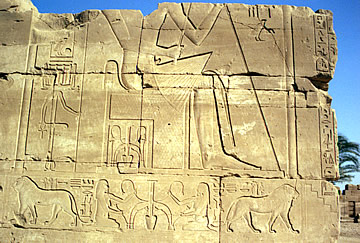
SW of these structures the Sacred Lake, created by Tuthmosis III, was used for ritual purposes by the priests of the temple.
After our first visit we knew we'd need a lot of time to see everything when we returned so second time around we made sure we arrived when the site opened.
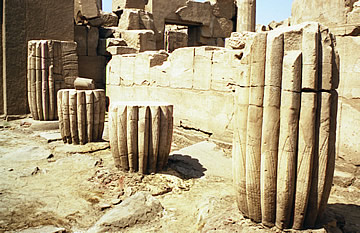
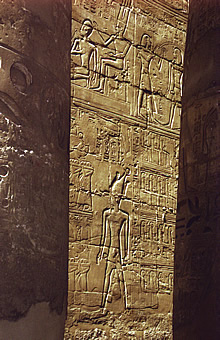
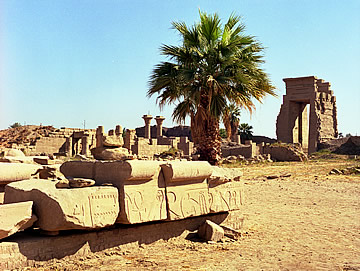
We spent another three hours exploring this magnificent temple complex and as usual taking lots of photographs.
It was very hot by the time we left so we took a horse-drawn carriage back to the Old Winter Palace - highly recommended. The horse looked really tough but it was either cunning or lazy as it regularly slowed down unless "encouraged" to move faster by the driver!